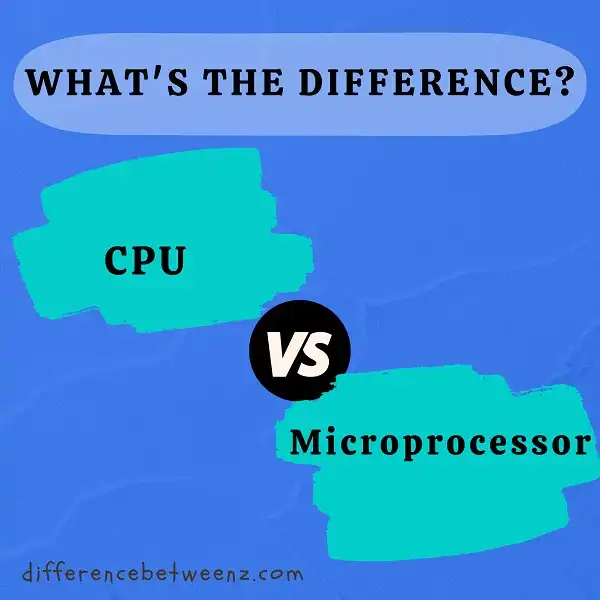A microprocessor is a single chip that contains the arithmetic logic unit (ALU), control circuitry, and basic input/output (I/O) devices. Central processing units (CPUs), such as those in personal computers, are multipurpose devices that contain microprocessors, memory, and other circuits. Microprocessors evolved from simple four-bit CPUs in the early 1970s to the 32-bit and 64-bit processors found in most personal computers today. In addition to increasing circuit density and complexity, manufacturers have also been able to increase the clock speed of microprocessors. The fastest microprocessor now operates at more than 4 gigahertz (GHz).
What is a CPU?
A CPU, orCentral Processing Unit, is the main component of a computer. It handles all the instructions that the computer needs to perform, and it carries out all the processes that make up a program. The CPU is made up of two parts: the control unit and the arithmetic logic unit. The control unit controls all the other parts of the computer and tells them what to do. The arithmetic logic unit carries out mathematical operations and makes logical decisions. Together, these two units form the brain of the computer, and they are responsible for everything that the computer does.
What is Microprocessor?
A microprocessor is a multipurpose, programmable logic device that reads binary instructions from a storage device called memory, accepts binary data as input and processes it according to those instructions, and provides results (also in binary form) as output. You can think of a microprocessor as a tiny computer embedded in another device, like your cell phone or car engine control unit. The first microprocessor was the Intel 4004, introduced in 1971. It had only 2300 transistors and could process about 60,000 instructions per second. The processors you’ll find in today’s PCs are much more powerful: they have several cores (each of which can process instructions independently) and can handle billions of instructions per second. Thanks to Moore’s law (which predicts that the number of transistors on a chip will double approximately every two years), we can expect microprocessors to continue to get smaller and more powerful at an ever-increasing pace.
Difference between CPU and Microprocessor
Central processing units (CPUs) and microprocessors are both devices that perform calculations and control operations within electronic systems. However, there is an important distinction between the two. A CPU is a complete processing unit that includes both the ALU (arithmetic logic unit) and the control unit. A microprocessor, on the other hand, is a single integrated circuit that contains only the ALU. This means that CPUs are more powerful than microprocessors, but also more expensive and complex. As a result, CPUs are typically used in larger, more sophisticated systems while microprocessors are more commonly found in smaller devices such as calculators and watches. Regardless of their size or complexity, both CPUs and microprocessors play a vital role in performing essential operations within electronic systems.
Conclusion
There you have it! You now know the difference between a CPU and a microprocessor. While they may seem similar, there are some important distinctions that set them apart. CPUs are found in all types of devices while microprocessors are mainly used in computers. Additionally, CPUs handle more tasks than microprocessors. If you’re looking for a powerful processing unit for your device, then you’ll want to go with a CPU. However, if you need something specific for your computer, then a microprocessor is the way to go.


